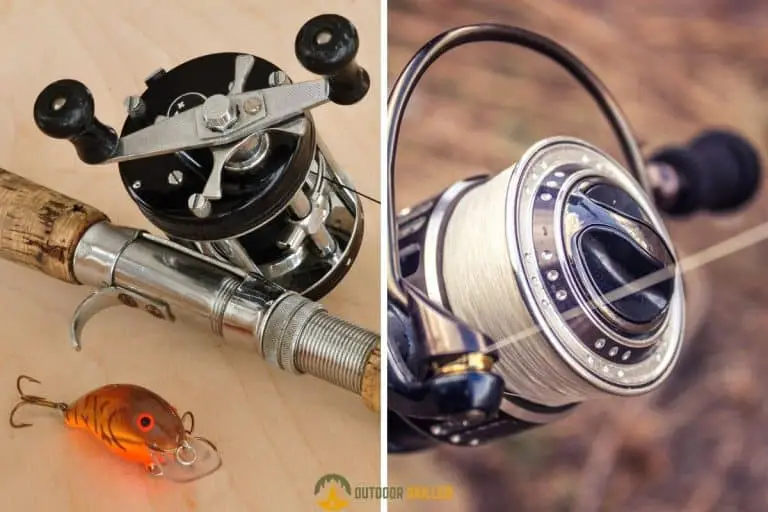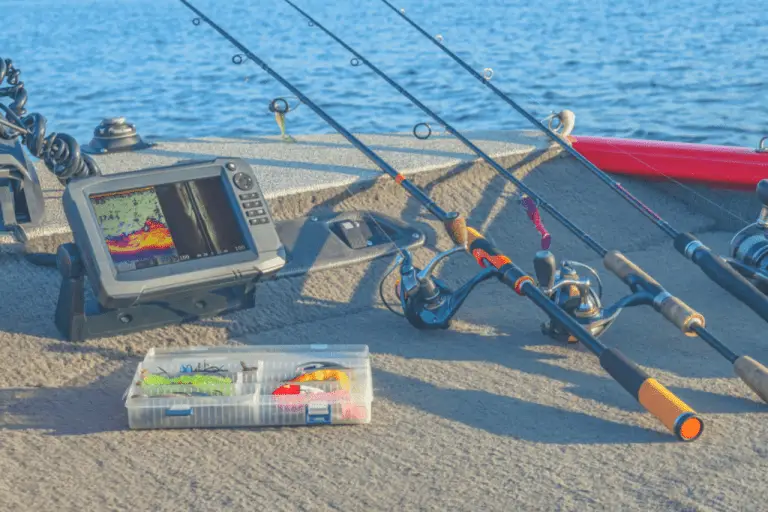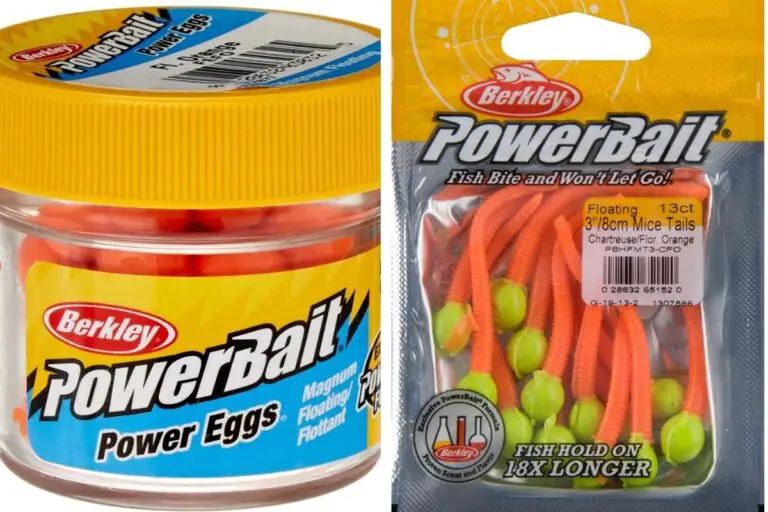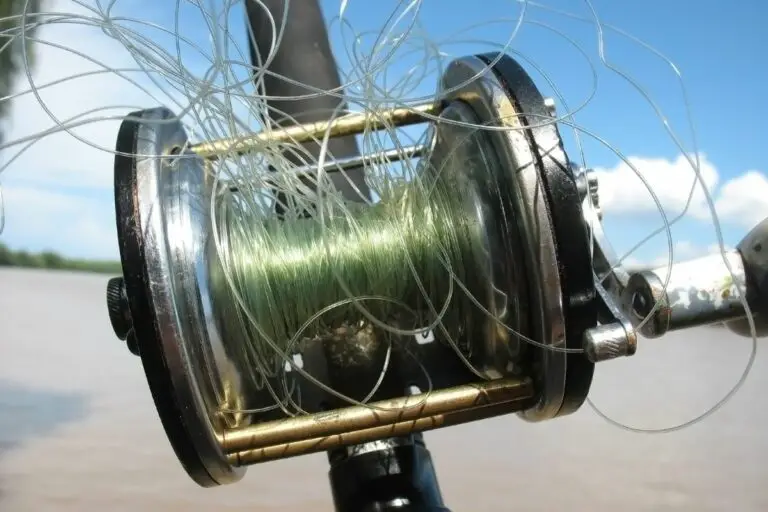What Is A Scupper Hole? These Holes In Your Kayak Matter
Kayaks come in different shapes and sizes, with different features that affect the kayak’s performance on the water.
If you’re new to kayaking, you may have noticed that some kayaks have holes on the bottom or sides, which may seem peculiar or hazardous.
However, these holes serve an important function and enhance your kayaking experience. So, what is a scupper hole?
A scupper hole is a small opening on the bottom or sides of a sit-on-top kayak that allows water to drain out. This helps prevent water from pooling in the kayak, which can make it unstable and unsafe. However, in some cases, you may need to plug the scupper holes to improve stability.
Keep reading to learn more about the function of scupper holes and whether they need to be plugged.
Table of Contents
What Is A Scupper Hole?
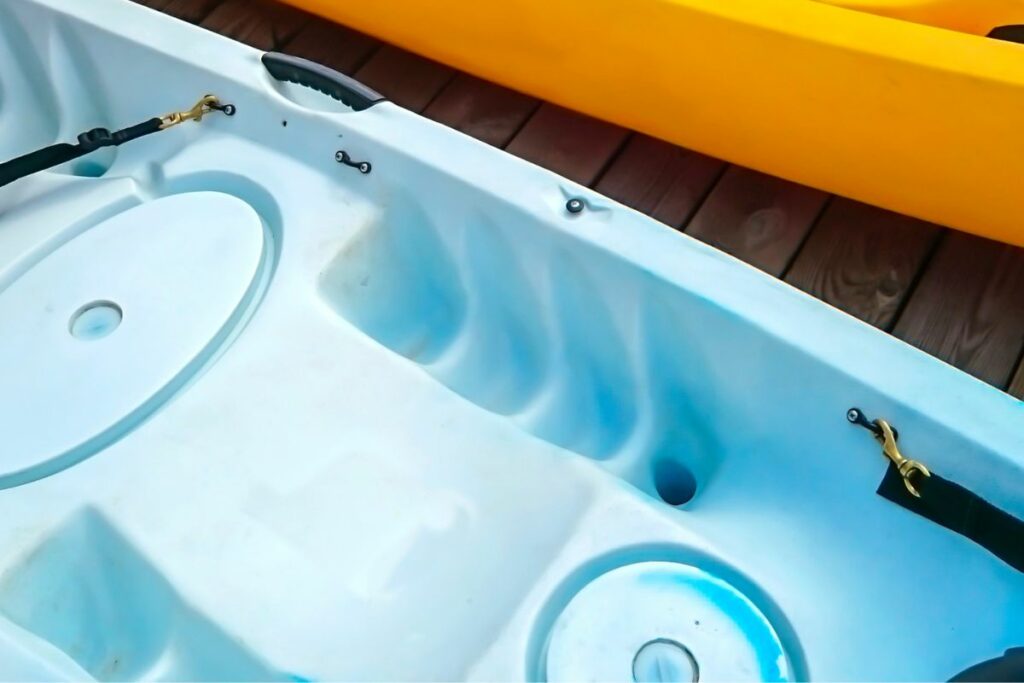
A scupper hole is a small opening located on the bottom or sides of a kayak, mostly sit-on-top kayaks and some recreational kayaks.
Kayaks can have multiple scupper holes and come in different sizes and shapes. The placement and size of the scupper holes can affect a kayak’s stability, maneuverability, and speed.
For instance, if the scupper holes are too large or too many, the kayak may be less stable, as more water may enter the kayak during rough conditions. Conversely, if scupper holes are too small or too few, the kayak may not drain water as effectively, making it heavier and less responsive.
Finally, some kayaks have self-bailing scupper holes, which allow water to drain out but prevent water from coming in. This can be particularly useful in rough water conditions, where waves can splash into the kayak.
Why Do Kayaks Have Scupper Holes?
When a kayaker paddles on the water, some amount of water enters the kayak. If the water accumulates inside the kayak, it can make the kayak heavy, unstable, and unsafe.
So, the primary function of scupper holes is to allow water to drain out of the kayak, keeping it dry and reducing its weight.
Another function of scupper holes is to provide ventilation to the kayak’s hull to prevent the buildup of moisture and mold inside the kayak, keeping it fresh and clean.
Can Scupper Holes Sink a Kayak?
Scupper holes themselves cannot sink a kayak. In fact, scupper holes are designed to prevent water from accumulating inside the kayak, which can make it heavy, unstable, and unsafe.
However, if scupper holes become blocked, the water inside the kayak can’t drain out, causing it to become heavier and less stable. This can increase the risk of capsizing and potentially lead to the kayak sinking.
Therefore, it’s important to keep scupper holes clean and unobstructed to ensure they function properly.
Do Sit-Inside Kayaks Have Scupper Holes?
While scupper holes are more commonly found in sit-on-top kayaks, some sit-inside kayaks may also have scupper holes. However, it’s not as common.
Sit-inside kayaks are designed to have a cockpit that keeps the paddler’s lower body dry, so scupper holes are not as necessary for drainage as they are in sit-on-top kayaks.
Instead, sit-inside kayaks often have other features, such as bilge pumps or foot pedal drains, to help remove any water that may enter the kayak.
Here is my recommended Bilge pump, which you can get on Amazon. It’s very good for the price; surprisingly durable and versatile.
Do Scupper Holes Need to Be Plugged?
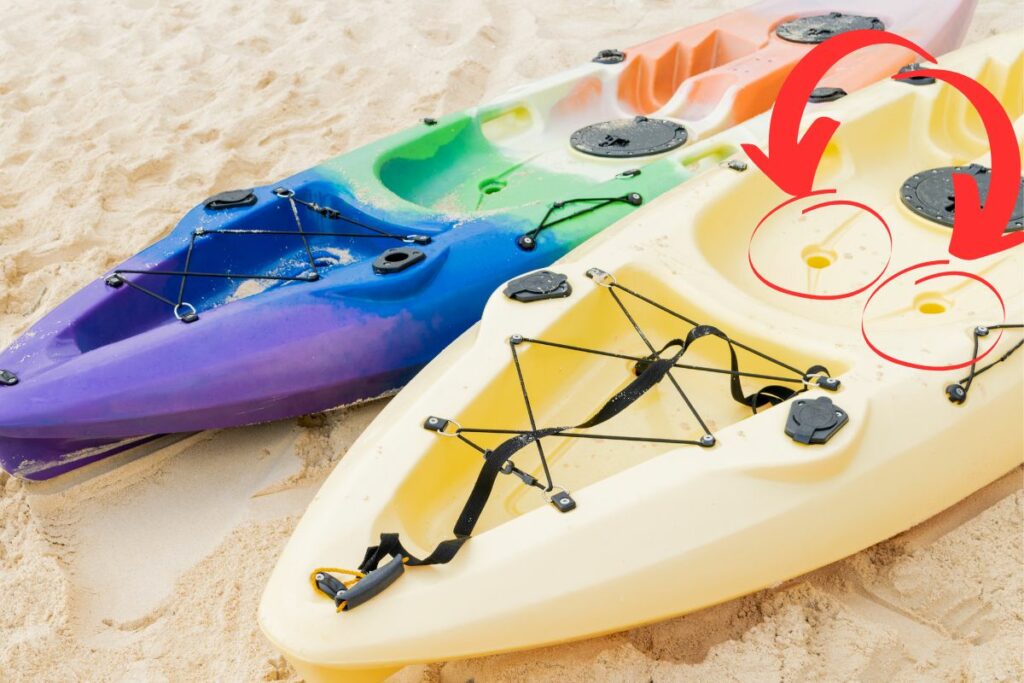
Scupper holes do not need to be plugged. Whether or not to plug a kayak’s scupper holes depends on the kayaking conditions and your preference.
In some situations, such as in cold water or when kayaking in waves or rapids, it may be beneficial to plug the scupper holes to keep water out and improve the kayak’s stability. However, leaving the scupper holes open in warm weather or calm water conditions can help drain water and keep the kayak dry.
If you decide to plug the scupper holes, you should plug them all or none at all. Plugging some scupper holes and leaving others open can create an uneven weight distribution and affect the kayak’s stability.
How to Plug Scupper Holes?
To plug scupper holes, you can use scupper plugs, which are typically made of foam or rubber and designed to fit snugly into the scupper hole.
Here are the general steps you need to follow to properly plug your kaya’s scupper holes:
- Ensure that the kayak is on a stable surface and that the scupper holes are clean and dry.
- Choose the appropriate size and type of scupper plug for your kayak.
- Insert the scupper plug into the scupper hole, pushing it down until it is firmly seated in the hole.
- Test the plug by pushing down on it to ensure it is secure and won’t come loose during kayaking.
- Repeat this process for all scupper holes in the kayak.
Remember that using the wrong size or type of scupper plug can lead to water leaking into the kayak, so make sure to use plugs specifically designed for your kayak.
Additionally, it’s a good idea to periodically check the scupper plugs during kayaking to ensure they are still secure and not leaking water.
Here is a good video showing how to do it:
How to Choose the Right Scupper Plugs for Your Kayak?
It’s important to choose scupper plugs suitable for your kayak to ensure they function properly. So, here are some factors to consider when choosing scupper plugs:
- Material: Scupper plugs are typically made of foam or rubber.
- Foam plugs are lightweight and easy to install, but they may compress over time, allowing water to leak in, while rubber plugs are more durable and long-lasting but may be more difficult to install.
- Size and shape: Scupper plugs should be the right size and shape to fit snugly into the scupper holes in the kayak.
- Some plugs are adjustable to fit a range of sizes, while others are specifically designed for certain kayak models.
- Self-draining: Some scupper plugs are designed to allow water to drain out of the kayak while keeping water from coming in.
My top recommendation for reliable scupper plugs is these Hikeen Kayak Scupper Plugs that can fit most kayaks. They’re made from durable and lightweight EVA material and feature a sturdy lanyard attached to the top, which makes them easy to install and remove.

Kayak your way to Freedom
- On a budget? Check out the best fishing kayaks under $500 here and the best Fishing Kayaks under $1,000 here. Or Check the best Cheap Kayaks here.
- Going fishing? Here are the best Ocean fishing kayaks, and here are the best River Fishing Kayaks.
- You can also find the best Fly Fishing Kayaks here and the best Bass Fishing Boats here.
- A bit experienced? Check out the best modular kayaks here and the best tandem fishing kayaks here.
- Looking for something special? Check out my favorite Ducky kayaks here.
- Navigate your way with these awesome and beginner-friendly Kayak compasses.
- Going Hunting? These Duck hunting kayaks will give you an unfair advantage!
- Have a need for speed? These motorized kayaks will get you moving.
- Protect yourself from the sun with these Kayak shades, and make your kayak more comfortable with these Kayak seats.
- Keep your feet dry and warm with these superb Kayaking shoes.
- Going Kayaking in cold water? Stay warm with these Kayaking gloves.
- Paddle Less, Fish More with the Best Kayak Motors
- Looking to get a trolling motor on your kayak? Check out the best kayak trolling motor mounts here.
If you like this article, please share it or pin it, you can find the share buttons below. We will really appreciate it ❤️

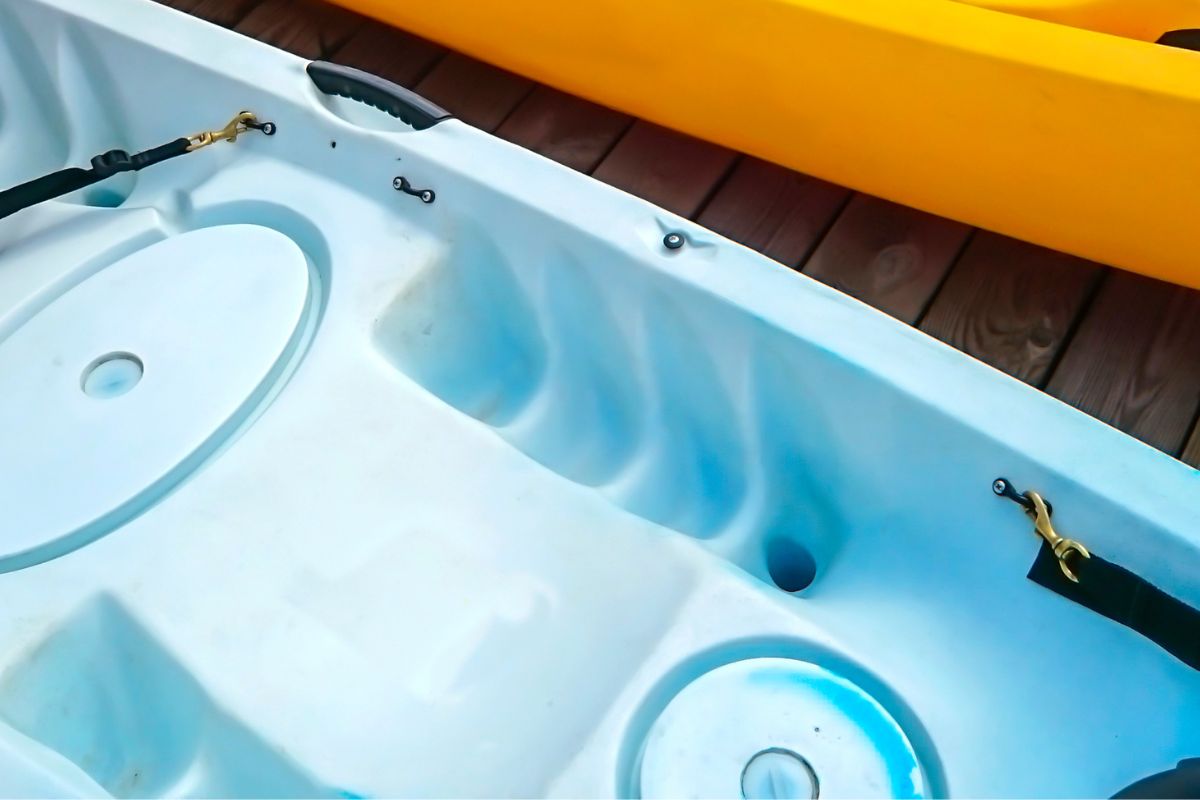

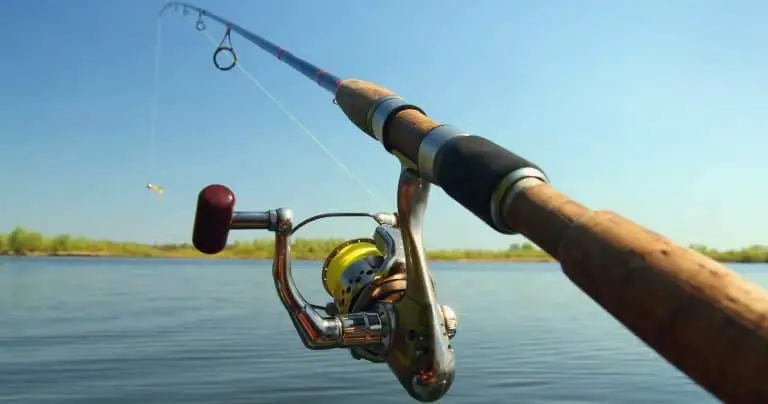
![How Much Is a Fishing License? All States (& Canada) [2024 Updates!]](https://outdoorskilled.com/wp-content/uploads/2021/06/PA-fishing-license-768x431.jpg)
